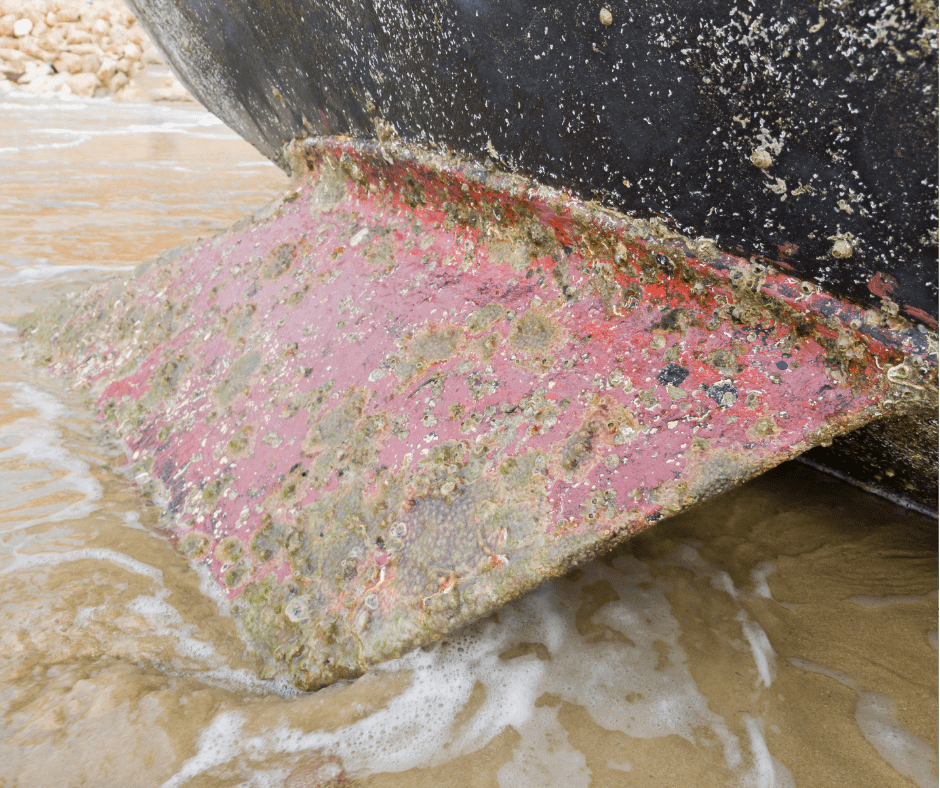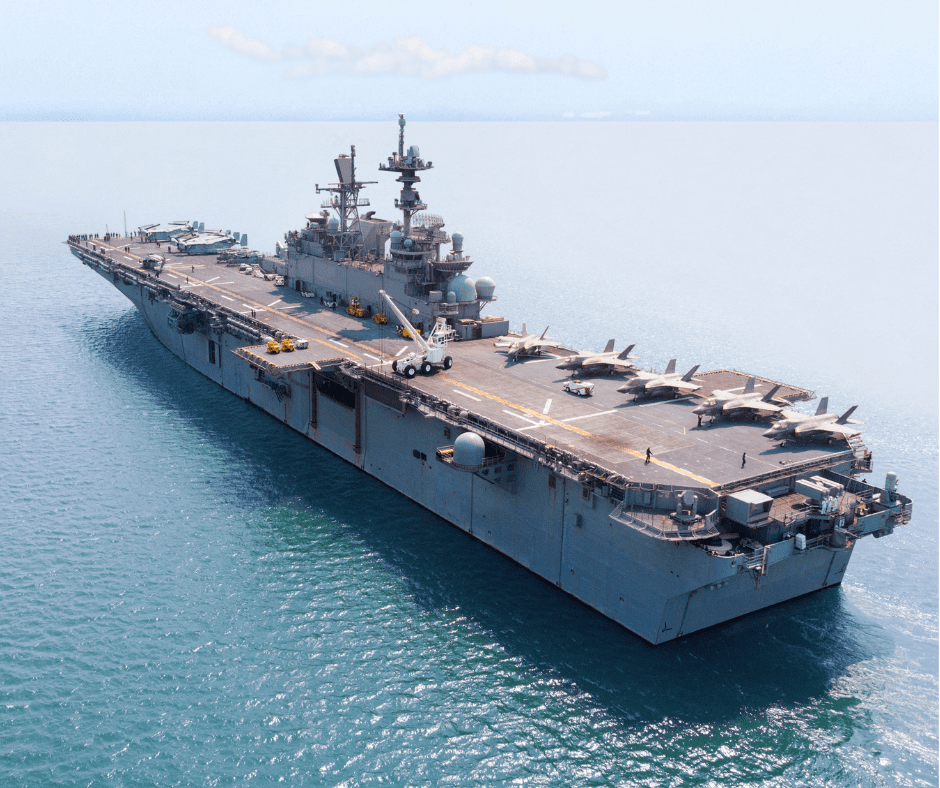The marine industry is experiencing a revolutionary transformation with the integration of composite materials, reshaping everything from leisure boats to large naval vessels. In this blog, we will be exploring the applications of composites in marine industry developments, the types of composites used, and the benefits of composites in marine vessels whilst outlining innovative project examples.
Table of Contents
Introduction to Composite Materials in the Marine Industry
Composite materials are used in the marine industry to create lightweight, durable vessels that are corrosion-resistant to harsh marine environments. Used in the construction of hulls, decks, masts, and interior fixtures, they enable streamlined, energy-efficient designs. Composites focus on performance and sustainability, offering significant advantages over traditional materials such as steel or wood.
Types of Composites Used in Marine Environments
The marine environment demands materials to withstand harsh conditions, such as corrosive saltwater, extreme weather conditions, the growth of marine organisms on vessel surfaces (biofouling), chemical exposure and moisture and humidity. Fibreglass and carbon fibre composites are popular choices of materials used by the marine industry to combat these conditions.

Fibreglass Composites: A Popular Choice
Fibreglass composites are widely favoured in the marine industry for their versatility and cost-effectiveness. Characterised by glass fibres embedded in a resin matrix, these composites offer considerable strength, durability, and resistance to the corrosive marine environment. Their ease of moulding into complex shapes makes them ideal for a range of marine applications, from small boats to large yachts.
Carbon Fibre and Other Advanced Composites
Carbon fibre composites, known for their high strength-to-weight ratio, are increasingly used in high-performance marine applications. These composites provide enhanced stiffness, strength, and reduced weight, making them suitable for racing yachts and advanced naval vessels. Additionally, other advanced composites, which include aramid fibres and hybrid materials, are being explored for their unique properties, such as improved impact resistance and reduced susceptibility to water absorption, further expanding the possibilities in marine technology.
Applications of Composites in Marine Vessels
The use of composite materials in marine vessels represents a significant leap in maritime engineering, offering enhanced performance, durability, and design flexibility.
Use in Commercial Ships
In commercial shipping, composites are increasingly being used for their strength, lightweight, and corrosion resistance. They are applied in parts like hulls, decks, and superstructures, contributing to greater fuel efficiency and lower maintenance costs. The adaptability of composites also allows for innovative designs, improving cargo capacity and operational efficiency.
Composites in Recreational Boats and Yachts
In the realm of recreational boating and yachts, composites play a crucial role in achieving high performance and aesthetic appeal. These materials enable sleek, streamlined designs, reduced weight, and improved speed and stability. The use of composites in yachts also allows for customisation in design, catering to the luxury market with both functional and aesthetic enhancements.

Benefits of Composites in Marine Applications
Composite materials offer a range of benefits in marine applications, such as increased durability in harsh environments, improved corrosion resistance, improved lightweight, energy-efficient designs, increased shock absorption and impact resistance, plus reduced susceptibility to water absorption.
Corrosion Resistance and Longevity
One of the primary advantages of composites in marine environments is their resistance to corrosion, especially in saltwater and harsh environments such as intense UV radiation and heat, high levels of mechanical stress due to waves, severe storms, prolonged exposure to moisture, high humidity and freezing temperatures. This corrosion-resistant quality significantly enhances the longevity of marine vessels, reducing the need for frequent repairs and replacements, thereby offering a more sustainable and cost-effective solution.

Maintenance Best Practices
Maintaining composite materials in marine applications involves specific practices to ensure their longevity and performance. Regular inspections for damage, proper cleaning techniques to prevent biofouling and adherence to manufacturer’s guidelines are essential. However, composites offer a reduced need for frequent maintenance when compared to traditional materials, which is another benefit that translates to lower operational costs.
Design Flexibility
Composites offer unparalleled design flexibility, allowing for innovative and complex shapes that are difficult to achieve with traditional materials. This allows for bespoke solutions for both commercial and recreational marine applications and enhances performance, fuel efficiency and overall aesthetic appeal.
Innovative Marine Projects Using Composites
Composite materials are at the forefront of some of the most innovative projects in the marine industry, showcasing their versatility and superior performance.
Cutting-Edge Naval Vessels
In the realm of naval vessels, composites are being utilised to create cutting-edge ships that are lighter, faster, and more agile. Their superior strength-to-weight ratio allows for significant improvements in speed and fuel efficiency while also enhancing stealth capabilities. The use of composites in these vessels represents a significant advancement in naval technology, offering strategic advantages in modern naval warfare.
An example is the fleet of the global Navy combat ships, known as Type 26 Frigates. The HMS Glasgow began the fitting out phase of construction in 2022 and is expected to enter the fleet along with HMS Cardiff and HMS Belfast before 2030. HMS Birmingham, Sheffield, Newcastle, Edinburgh and London are expected to join the fleet after 2030.
The HMS Glasgow is the first Royal Navy vessel to have a major structural element made from composites – a bulky enclosed mainmast that reduces top weight. This mainmast ‘supports an array of sensors’ and ‘allows the primary radar to be sited about 35m above the waterline.’ It also hosts an active/passive bow-mounted sonar array in a fibreglass dome.
Specialised Submarines and Underwater Crafts
Composites have also significantly impacted the development of specialised submarines and underwater crafts. Their ability to withstand high-pressure environments and corrosive deep-sea conditions makes them ideal for such applications. These materials enable the creation of more durable submarines with lower acoustic signatures, capable of deeper and longer missions. The use of composites in these underwater crafts is a testament to their versatility and capability in extreme marine environments.
An example is the Royal Navy’s Astute Class of submarines. Currently, five astute submarines have been commissioned, with HMS Agamemnon due to be commissioned in 2024 and HMS Agincourt between 2024-2026. The Astute’s design features a cowl made from composites that reduce acoustic energy emitted from the spinning rotor, demonstrating how composite materials are being used in cutting-edge, innovative marine projects.
The Future of Composites in the Marine Industry
The marine industry is poised for transformative changes with advancements in composite technology.
Emerging Trends and Technologies
Emerging trends in composite technology are set to further revolutionise marine design and construction. Innovations such as nanocomposites and smart materials, which can adapt to environmental changes, are on the horizon. These advancements promise to enhance performance, reduce weight, and increase the durability of marine vessels, indicating a future where composites play an even more integral role in marine technology.
Environmental Impact and Sustainability Considerations
Sustainability is becoming increasingly important in the marine industry, and composites are at the forefront of this movement. Their longer lifespan, reduced maintenance needs, and potential for recyclability align with environmental goals. Future developments are focusing on eco-friendly resins and manufacturing processes to minimise the environmental footprint, ensuring that the marine industry progresses technologically and sustainably.
Summary of Applications of Composites in Marine Industry
It is evident that composite materials are not just a part of the marine industry’s present but are crucial to its future. These materials’ versatility, durability, and sustainability provide a strong foundation for future innovations. From enhancing naval capabilities to revolutionising recreational boating, composites are setting new benchmarks. As we move forward, we can expect to see even more groundbreaking applications and developments in this field, solidifying composites as the cornerstone of marine technological advancement.


